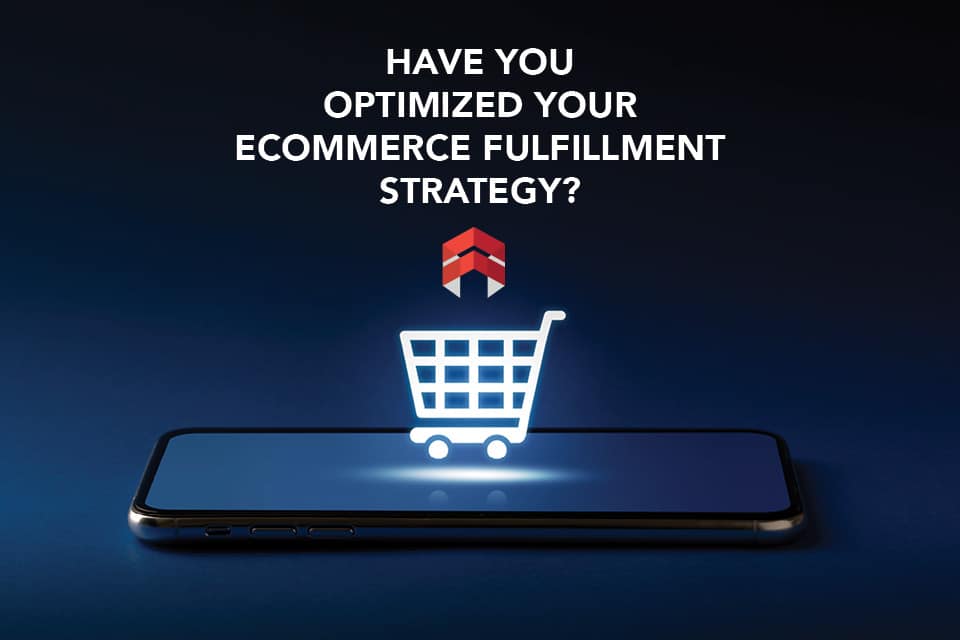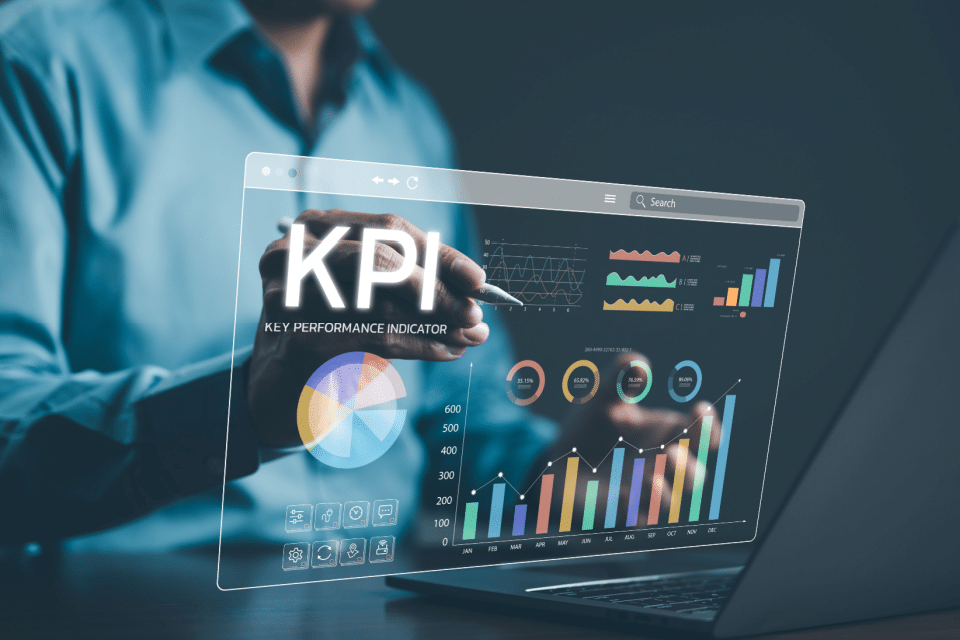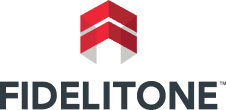5 Choices to Optimize Your eCommerce Fulfillment Strategy

Brands selling products through ecommerce today face complex decisions to manage order fulfillment operations. Each choice has an impact on customer loyalty, repeat sales, and ecommerce profitability. Have you optimized your ecommerce fulfillment strategy?
Here is a guide to critical decisions about shipping strategy, order cycle time, shipping speed, technology—and whether to insource or outsource your order fulfillment operation.
1. Optimize your shipping strategy
Should you use a flat rate or calculated shipping rate strategy? Flat rate, where shipping costs are determined by the size of the box (rather than dimensional weight), simplifies the process and delivers predictable costs. A calculated rate can save you money and keep the customer in control, but there are many variables. According to Practical Ecommerce, flat-rate shipping “encourages larger orders and frequently translates into lower shipping costs for customers.” A customer paying a set amount may add items to the order to achieve a sense of value.
What about free shipping? This option will eat into your profits, but you could gain more customers and sales. Today, 96% of online retailers offer free shipping options, reports Retail Dive. Should you employ a free shipping threshold? Almost half of ecommerce retailers do, says Digital Commerce 360. Options vary by product niche.
Practical Ecommerce says, “Consumers have come to expect free shipping for any online purchase. Merchants who don’t offer it are at a disadvantage.” They note that raising your free shipping threshold or making free shipping a perk of membership can help boost revenues. Another tactic is to offer free shipping as a time-limited special.
How do you increase order size (and potentially increase inventory turns) to offset the cost of shipping? Bundling or creating kits is a powerful strategy that builds perceived value in the eyes of the consumer. It provides long-term revenue advantages, too: “Bundling items together is a great way to push customers to try new products,” as explained in the blog, Product Bundling & Kitting Services Grow Ecommerce Revenue.
2. Manage order cycle time
Cycle time measures the time it takes from a customer placing an order to the receipt of the product or service by that customer. It is important to define what you want your order cycle time to be. What are your competitors doing? What do your customers expect? Will cycle time be a differentiator for your brand? “Speed of delivery is now the decisive factor behind over one-quarter of abandoned carts,” according to Retail Dive.
Keep in mind that order cycle time is more than just transit time from the warehouse to the customer. Consider: How long does it take to get the order from the shopping cart to your fulfillment software or warehouse management system? How long does it take to physically pick and pack the order? What are your cut-off times? How long does shipping or transit time take? These are all critical components to cycle time, and order cycle time can be as fast or as slow as you engineer it to be.
Applying the right technologies can give you an edge on cycle time, according to the blog, Ecommerce: Technology Connects the Dots for Order Cycle Time. It’s useful to consider your customers, their expectations, and the competitive landscape for your products. This will help you determine the ideal order cycle time for your brand.
3. Find the ideal shipping speed
The growth of ecommerce is fueled by consumer desire to “buy what they want, when they want it–and often at a far more competitive price,” as explained in the Nielsen IQ report, E-commerce success in 2023 and beyond.
While cost and speed are typically the two main focal points for consumers and brands, reliability is close behind. You may offer and boast a short cycle time to your customers, but as a differentiator for your brand and a lever of customer experience, how will it look if your brand can’t deliver as promised? Your processes must all work perfectly for your brand promise to succeed.
How reliable are your processes? Your technology, integrations, fulfillment capabilities and shipping must all be fine-tuned to deliver reliability. Consumers may pay more for a shorter cycle time, and they do so because they are counting on their order arriving when they expect it to. Order accuracy is critical as well. Imagine meeting the promised deadline but missing the item(s) promised.
4. Leverage technology and ecommerce integrations
Are your website, shopping cart application, order fulfillment technologies and integrations robust enough to adapt to changing market and consumer demands? Are they positioned to support rapid growth? How about multiple fulfillment center locations?
As an example, FIDELITONE’s integrations with Shopify scale to your needs to ensure seamless and satisfying customer experiences. Technologies such as ecommerce integration, a robust warehouse management system, order accuracy controls, inventory management, and shipper integrations are all crucial to your ability to deliver on brand promises and maintain profit margins. The cost of change is significant, so as you prepare your growth strategy, having the right technologies and integrations can keep you on a winning track.
Also consider how you will give customers visibility to their orders and enable them to track status. Customers who use ecommerce expect ongoing digital communications; this is a lynchpin of the post-purchase experience. As reported in Forbes, “Compared to typical marketing emails with open rates of 10% to 20%, tracking notifications can get open rates between 50% to 80%.” Proactive status communications can also reduce the burden on customer service. You can leverage effective commerce integrations to give customers real-time tracking to nurture the customer relationship and earn customer loyalty.
5. Evaluate insourcing vs. outsourcing fulfillment
Whether to manage order fulfillment in-house or outsource is a keystone decision for many ecommerce retailers. The truth is, the best strategy may change as your business grows.
First, insourcing: To start with, you need resources such as warehouse space, trained labor, and in-house expertise. Order fulfillment actually breaks down into a long list of processes (see Outsourced Order fulfillment: What’s Your ROI?) Do you build this system and invest the resources to manage it in-house, or do you enlist the help of a supply chain services provider? In particular, smaller ecommerce merchants sometimes choose to hold the reins, determining that insourcing streamlines and simplifies order fulfillment. The tradeoffs may be: limited access to optimized shipping costs, limitations to growth, and lack of optimized technologies.
Outsourcing order fulfillment can give you instant access to deeper resources—flexible warehouse space, options and economies of scale in shipping costs, high level expertise, a continuous improvement process, and robust technologies. It can also give you access to a fulfillment center network to support your growth.
There are pros and cons to both options, but enlisting the expertise of a proven supply chain partner can give you an advantage and help you grow your ecommerce business. A best-fit partner can also consult with you on what the right strategy is for your business. Wondering where to go with these five choices? We’re here to be your thought partner in your order fulfillment decisions. Get in touch today.
FIDELITONE helps you earn customers’ loyalty through specialized services in inbound logistics, order fulfillment, last mile delivery and service parts management.
Recent Posts
-

The Keys to a Successful Onboarding for Last Mile Delivery Services
Efficient and comprehensive onboarding is essential when implementing a last mile delivery solution, especially when…
-

Critical Delivery Event Integrations for Great Customer Experiences
Last mile delivery is a complex journey, filled with multiple handoffs and moving parts, from…
-

Top 3PL KPIs & Performance Metrics to Track for Success
Outsourcing fulfillment to a third-party logistics (3PL) provider offers businesses the ability to scale, expand…
Are you interested in order fulfillment or last mile delivery services? Consult with a FIDELITONE expert to discuss how we can help.
